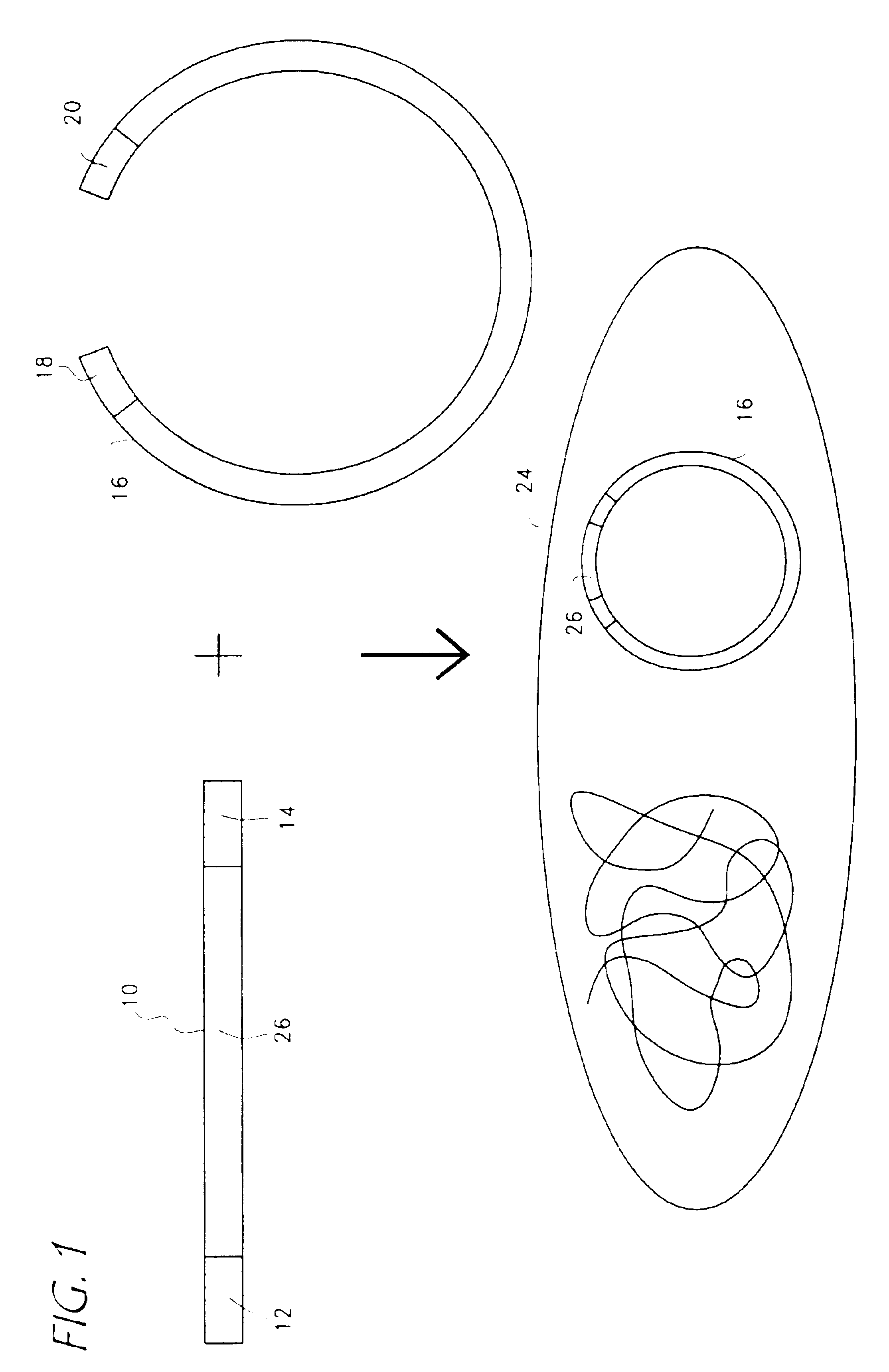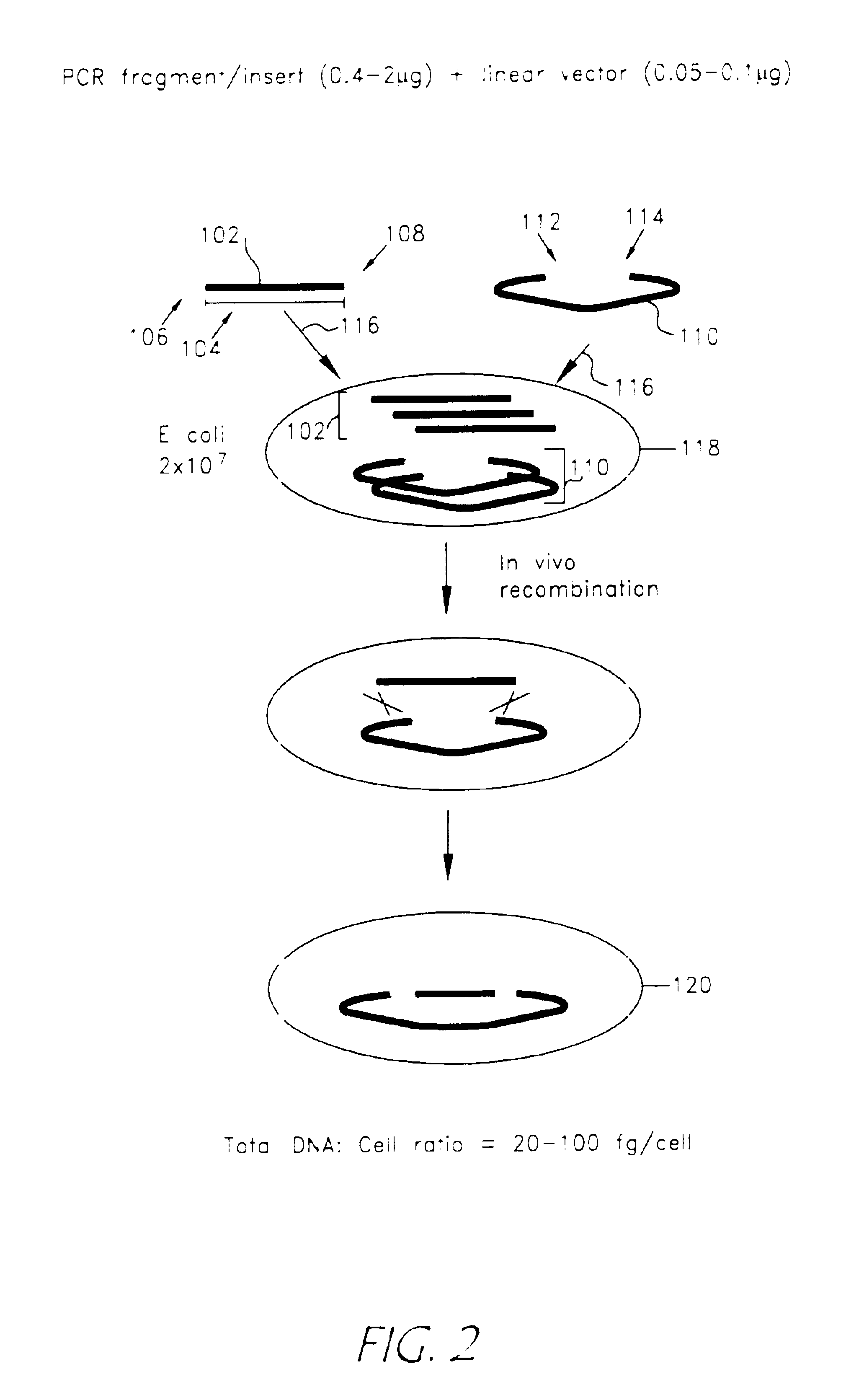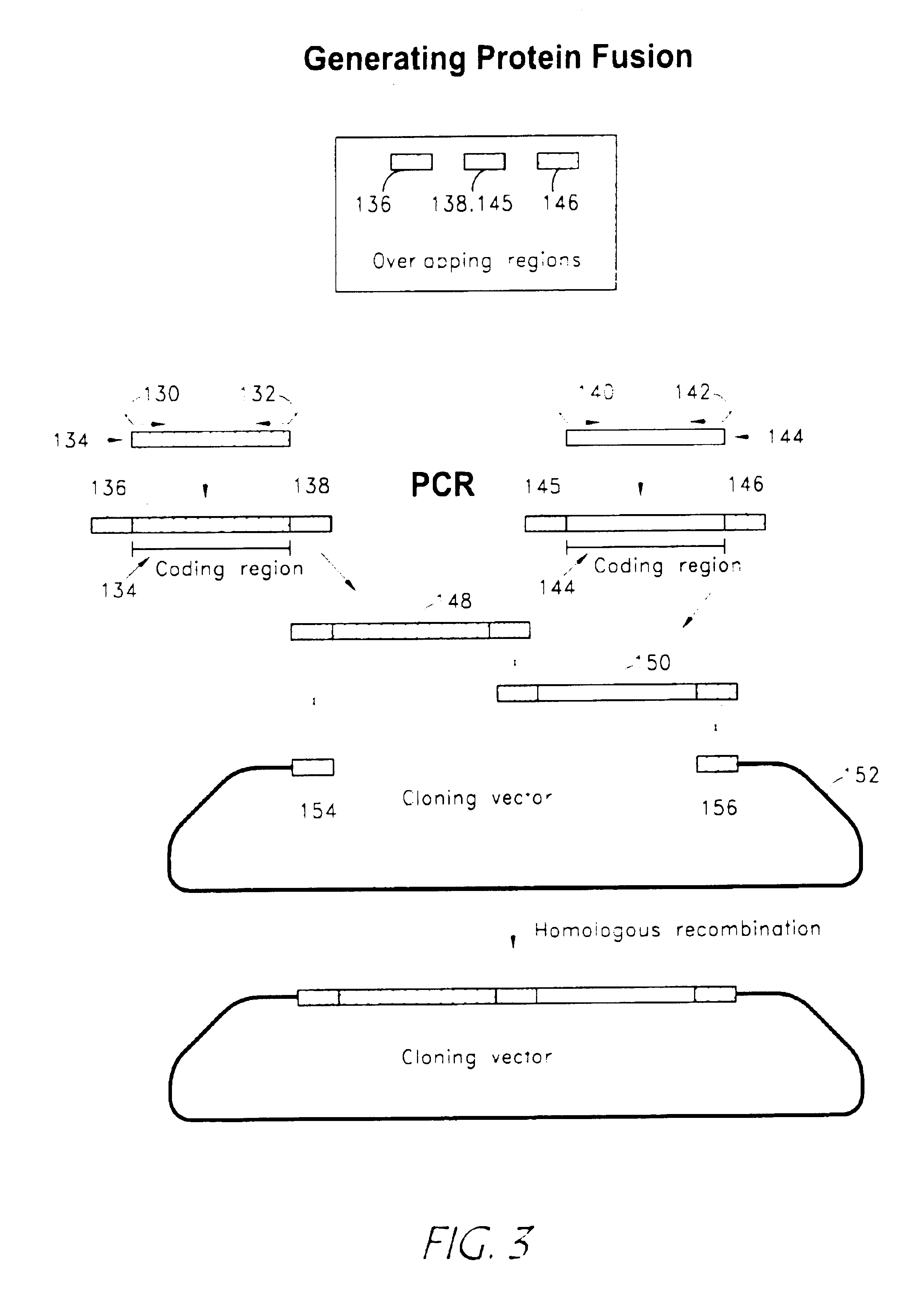Rapid and enzymeless cloning of nucleic acid fragments
a nucleic acid fragment and nucleic acid technology, applied in the direction of peptides, biochemistry apparatus and processes, polypeptides with his-tags, etc., can solve the problems of high number of background cells, use of various enzymes that can be very expensive, and significant drawbacks
- Summary
- Abstract
- Description
- Claims
- Application Information
AI Technical Summary
Benefits of technology
Problems solved by technology
Method used
Image
Examples
example 1
Generation of Transcriptionally Active PCR Fragment Encoding Chloramphenicol Acetyltransferase (CAT)
[0113]The following components were combined in a 50 μl polymerase chain reaction (PCR): primers; 5′CTGCAGGCACCGTCGTCGACTTAACAATGGAGAAAAAAATCACTGG3′ (SEQ ID NO. 1); and 5′CATCAATGTATCTTATCATGTCTGATTACGCCCCGCCCTGCCACTC3,′(SEQ ID NO. 2) 1 ng of DNA template containing CAT coding region, 200 μM dNTP and 1 unit Taq DNA polymerase.
[0114]PCR was performed as follows: denaturation at 94° C. for 30 seconds, annealing for 45 seconds at 55° C. and extension for 2 minutes at 72° C. for 25 cycles. The PCR product was analyzed by electrophoresis in 1% agarose gel and purified using a commercial PCR cleaning kit. A second PCR reaction was carried out using the product from the first PCR as template. The reaction mix also contained 5 ng of DNA fragment (800 bp) comprising a modified promoter sequence from human cytomegalovirus (Gene Therapy Systems, San Diego, Calif.), 5 ng of DNA fragment (200 bp) ...
example 2
Cloning of Transcriptionally Active PCR Fragment Encoding Chloramphenicol Acetyltransferase (CAT)
[0115]The PCR fragment of Example 1 was cloned by mixing 0.5 μg of the final PCR product with 0.1 μg of plasmid pCMVm-SV40-T that was linearized and had sequences identical to the sequences flanking the CAT gene in the PCR fragment. The mixed PCR product and linear vector were transformed into E. coli JC8679 through electroporation followed by incubation in SOC medium at 37° C. for 1 hour and plating on a LB / agar plate containing 100 μg / ml Kanamycin for selection over night at 37° C. Colonies were selected and miniprep DNA was isolated for further analysis and insertion of the PCR product into the vector.
example 3
Cloning of PCR Fragment Encoding Chloramphenicol Acetyltransferase (CAT) Using Chemically Competent Cells
[0116]The 1st PCR fragment of Example 1 was cloned by mixing 0.5 μg of the final PCR product with 0.1 μg of plasmid pCMVm-SV40-T that was linearized and had sequences identical to the sequences flanking the CAT gene in the PCR fragment. The mixed PCR product and linear vector were transformed into 107 E. coli DH5α chemically competent cells on ice for 15 minutes followed by incubation in SOC medium at 37° C. for 1 hour and plating on a LB / agar plate containing 100 μg / ml Kanamycin for selection over night at 37° C. Colonies were selected and miniprep DNA was isolated for further analysis and insertion of the PCR product into the vector.
PUM
| Property | Measurement | Unit |
|---|---|---|
| Fraction | aaaaa | aaaaa |
| Fraction | aaaaa | aaaaa |
| Fraction | aaaaa | aaaaa |
Abstract
Description
Claims
Application Information
 Login to View More
Login to View More - R&D
- Intellectual Property
- Life Sciences
- Materials
- Tech Scout
- Unparalleled Data Quality
- Higher Quality Content
- 60% Fewer Hallucinations
Browse by: Latest US Patents, China's latest patents, Technical Efficacy Thesaurus, Application Domain, Technology Topic, Popular Technical Reports.
© 2025 PatSnap. All rights reserved.Legal|Privacy policy|Modern Slavery Act Transparency Statement|Sitemap|About US| Contact US: help@patsnap.com



